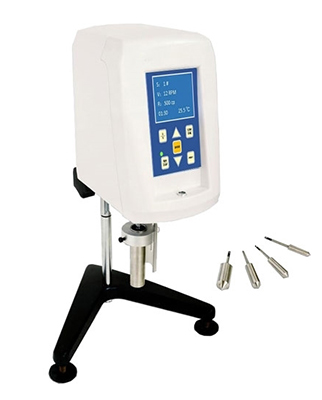What are the Different Types of Viscometer?
Viscometer is an instrument used to measure the viscosity of a fluid ( liquid or gas ). Viscosity is the physical quantity of internal friction occurring in the fluid when the fluid is flowing. It is the ability of the fluid to resist deformation and an important index used to identify some finished or semi-finished products. Viscosity varies with the type and temperature of the fluid. And what are the different types of viscometer? The following are seven common types which are widely used in petrochemical, pharmaceutical, food, light industry, textiles and other fields.
Capillary Viscometer
Capillary Viscometer is a common type of viscometer, which is usually called sayman viscometer. The working principle is as follows: The sample container (including the outflow capillary) is filled with samples to be tested and placed in a constant temperature bath. The liquid column height is H. Open the stopcock, the sample begins to flow to the receiver, and at the same time start to calculate the time until the sample liquid level reaches the scale line. The larger the sample viscosity, the longer the calculation time. Therefore, this period of time directly reflects the viscosity of the sample.
Rotational Viscometer

A common rotational viscometer is a cone-plate viscometer. It mainly consists of a plate and a cone plate. The motor drives the plate to rotate at a constant speed through a change gear, and the measured sample is kept between the two plates by capillary action, and the cone plate is driven to rotate by the friction force between the molecules of the sample. Under the action of torsion spring in the torque detector, the conical plate will not rotate after rotating at a certain angle. At this point, the torque applied by the torsion spring is related to the internal friction force (ie, viscosity) of the sample under test: The greater the viscosity of the sample, the greater the torque. There is a variable capacitor in the torque detector, and its moving piece rotates with the cone plate, thereby changing its own capacitance value. The torsion spring torque reflected by this capacitance change is the viscosity of the sample under test, which is shown by the meter.
ATO digital rotational viscometers have high measurement accuracy, good anti-interference performance, reliable test results, simple operation, beautiful appearance, etc. What’s more, we provide digital rotational viscometers with the viscosity measuring range from 1~100,000 mPa.s to 100-13000000 mPa.s, etc. If you’d like more information on ATO digital rotational viscometers, welcome to contact ATO.
Vibration Viscometer
The working principle of vibration viscometer is that the objects in the fluid will be hindered by the fluid when vibrating. The magnitude of this effect is related to the viscosity of the fluid. The ultrasonic viscometer is a commonly used vibration viscometer with a shrapnel in the detector. When excited by a pulsed current, the shrapnel generates mechanical vibration in the ultrasonic range. When the shrapnel is immersed in the sample, the amplitude of the shrapnel is related to the viscosity and density of the sample. When the density is known, the viscosity can be obtained from the measured amplitude data.
Solder Paste Viscometer
Solder paste viscometer is mainly used to measure solder paste, film thick paste, adhesives, solder paste anti-solder paint, liquid anti-solder paint, ink, paste, etc. The solder paste viscometer can measure the internal seal of the sample and has temperature adjustment skill. Then it can be connected to a personal computer. The solder paste viscometer can automatically measure and read data, then automatically calculate results.
Portable Viscometer
The portable viscometer uses a coaxial double cylinder design. With the sensor to maintain a fixed flow, the viscosity can be correctly measured according to the viscosity changes after the stirring of the connection.
Stormer Viscometer
Stormer viscometer used to measure paint and other coatings with KU value. Stormer viscometers are designed according to ASTM standards and GB9269-88 standards. The stormer viscometer uses a single chip microcomputer so that the operator can read the KU value of the measured sample directly from the instrument without looking up the table.
Ultrasonic Viscometer
Ultrasonic viscometer consists of ultrasonic testing elements and electronic instruments. When the electronic instrument outputs a pulse current, it will excite the iron-cobalt-vanadium shrapnel immersed in the measured liquid. Due to magnetostrictive effect, mechanical vibration attenuation with time will be generated in the ultrasonic viscometer. The attenuation rate of the shrapnel in the liquid is measured by a measuring circuit, and the viscosity of the liquid can be expressed by the obtained results.

